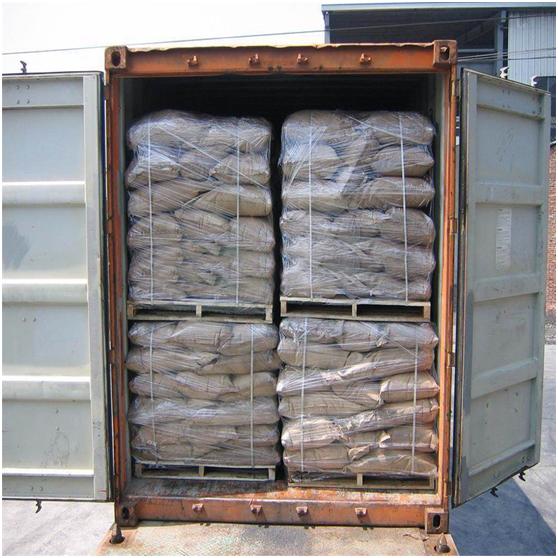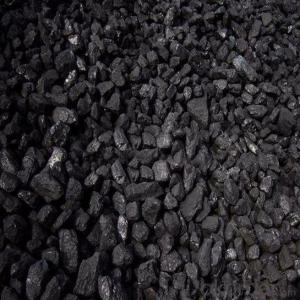Recarburizer for steelmaking High Carbon Low Sulphur For Metals Casting
- Loading Port:
- Dalian
- Payment Terms:
- TT OR LC
- Min Order Qty:
- 10 m.t
- Supply Capability:
- 500000 m.t/month
OKorder Service Pledge
Quality Product, Order Online Tracking, Timely Delivery
OKorder Financial Service
Credit Rating, Credit Services, Credit Purchasing
You Might Also Like
Specifications of Recarburizer for Steelmaking:
As an ideal carbon additive and intermediate reactor
it has been widely used in different indust
Recarburizer for steelmaking
- F.C.: 90%min
ASH: 8%max
V.M.: 2%max
S: 0.5%max
MOI: 1%max
- F.C.: 93%min
ASH: 6%max
V.M.: 1%max
S: 0.5%max
MOI: 1%max
- F.C.: 95%min
ASH: 4%max
V.M.: 1%max
S: 0.5%max
MOI: 1%max
We also can supply the size is as customers' requirements.

- Q:Is there any difference between carbon plate and universal board?
- Moreover, due to the characteristics of the rolling process, the mechanical properties of the steel plate vary greatly in the rolling direction and other directions (anisotropy), especially the impact power index is more obvious.In addition, the industry often encountered "cold-rolled carbon structural steel plate", "high-quality carbon structural steel plate" and so on, we should pay attention to distinguish between, do not mix.
- Q:Which is better, 13 and 14 carbon breath tests?
- The following is the range of feesC14- carbon 14 breath test, each province Price Bureau regulations are different, 95-120 yuanC13- carbon 13 breath test, 150-220 yuan
- Q:What are carbon credits and how do they work?
- Reducing greenhouse gas emissions through a market-based approach is what carbon credits are all about. The idea is to assign a value to the removal or reduction of one metric ton of carbon dioxide or its equivalent (CO2e) from the atmosphere. These credits represent the right to emit a specific amount of greenhouse gases and can be traded or sold on the carbon market. The main purpose of carbon credits is to create motivation for companies, organizations, or individuals to decrease their emissions. By establishing a price for carbon emissions, it encourages businesses to invest in cleaner technologies and practices to offset their carbon footprint. This ultimately leads to a decrease in overall greenhouse gas emissions, which contributes to the global fight against climate change. To acquire carbon credits, organizations undertake projects that reduce or eliminate greenhouse gas emissions. These projects can involve installing renewable energy sources, improving energy efficiency, planting trees, or investing in clean development mechanisms in developing nations. Independent third parties evaluate and verify each project to ensure its legitimacy and actual reduction in emissions. Once a project is approved and verified, it is given a specific number of carbon credits based on the amount of emissions it has reduced or eliminated. These credits can then be sold on the carbon market to companies or individuals seeking to offset their own emissions. Buyers can use these credits to compensate for their own emissions, effectively neutralizing their carbon footprint. The carbon market facilitates the buying and selling of carbon credits, providing a flexible and efficient approach to addressing climate change. The price of carbon credits can vary depending on supply and demand dynamics, as well as the strictness of emission reduction targets set by governments or global agreements. Overall, carbon credits are crucial in incentivizing emission reduction actions and promoting sustainable practices. They offer a financial mechanism for businesses to invest in cleaner technologies while making a positive contribution to global efforts in tackling climate change.
- Q:What should we do to reduce carbon emissions in our lives?
- The use of public transport, of course, is best to walk long distances, as far as possible the use of roads or railways, aircraft carbon emissions, the largest use of disinfection chopsticks, do not use disposable tableware, handkerchiefs do not use napkins
- Q:How do you make your own carbon fiber bar?Know. ID is how to make? Don't copy anything that has nothing to do with it
- 4. application development, at present, various applications for carbon fiber annual demand ratio is as follows: sports applications of about 30%, aviation applications for 10%, industrial applications for 60%. Three important applications in sports are the golf club, fishing rod and tennis racket frame. At present, it is estimated that the annual output of big bat is 34 million. According to the national geographic classification, these big clubs are mainly made in the United States, China, Japan and Taipei, China, and the United States and Japan are the main consumer of golf clubs, accounting for more than 80%. 40% of the carbon fiber balls in the world are made from carbon fiber of TORAY. Carbon fiber fishing rods around the world produce about 20 million pairs a year, which means this application has a steady demand for carbon fiber. The market capacity of tennis racket frames is about 6 million pairs per year. Other sports applications include hockey sticks, ski sticks, archery, and bicycles, while carbon fiber is also used in rowing, rowing, surfing, and other marine sports. In 1992, the airline's demand for carbon fiber began to decline, mainly due to the decline of the commercial aircraft industry, but it recovered rapidly in the early 1995. The main reason for the recovery is that the overall efficiency of the production has been improved, but also began to fully produce Boeing 777 aircraft, TORAY carbon fiber has been used
- Q:The same manufacturer of different types of badminton rackets on the logo, but the two materials in the end what is the difference?
- Under the same force, high elasticity means that the elongation of the fiber is relatively large, and the high rigidity means that the elongation is relatively small.The racket hit the ball using high elastic fiber can withstand greater deformation, good toughness, a slowerThe racket hit the ball using high rigid fibers during deformation is small, hit the ball faster.
- Q:How is carbon used in the production of batteries?
- Due to its unique properties, carbon is crucial in the manufacturing of batteries. It serves as an electrode material in primary and secondary batteries. When it comes to primary batteries, carbon acts as the cathode material. It plays a crucial role in facilitating the chemical reactions that occur during the discharge process, allowing the flow of electrons. The high conductivity of carbon is essential for efficient electron transfer, ensuring effective power delivery. Moreover, carbon's stability and low reactivity make it an excellent choice for durable primary batteries. In the case of secondary batteries, such as lithium-ion batteries, carbon is utilized in both the anode and cathode. The anode is composed of graphite, a type of carbon that can intercalate lithium ions during charging and release them during discharging. This process enables the reversible storage and release of energy, making graphite an ideal material for the anode. Carbon also enhances the overall performance of the cathode in secondary batteries. Carbon-based materials, like carbon black, are incorporated into the cathode to improve electrical conductivity and increase the available surface area for reactions. This results in higher energy and power densities, ultimately enhancing the battery's overall performance. Furthermore, researchers are exploring the use of carbon additives, such as carbon nanotubes or graphene, to further enhance battery performance. These carbon-based materials possess unique properties, including high surface area, electrical conductivity, and mechanical strength. These properties have the potential to improve energy storage capacity and battery lifespan. In conclusion, carbon plays a vital role in battery production by enabling efficient electron transfer, energy storage, and release. Its conductivity, stability, and ability to intercalate ions make it an essential component in both primary and secondary batteries, contributing to the advancement of energy storage technology.
- Q:What are the impacts of carbon emissions on the stability of mangroves?
- Carbon emissions have significant impacts on the stability of mangroves. Increased carbon dioxide levels in the atmosphere contribute to global warming and subsequent sea level rise, which directly affects mangrove ecosystems. Rising sea levels reduce the ability of mangroves to absorb wave energy and protect coastlines, making them more vulnerable to erosion and storm damage. Additionally, higher carbon dioxide concentrations can impair the growth and development of mangroves, potentially leading to reduced biomass and overall ecosystem productivity. Therefore, carbon emissions pose a threat to the stability and resilience of mangrove ecosystems.
- Q:How does carbon dioxide affect ocean acidity?
- Carbon dioxide affects ocean acidity by increasing the concentration of carbonic acid in the water. When carbon dioxide dissolves in seawater, it reacts with water molecules to form carbonic acid, which then dissociates into hydrogen ions and bicarbonate ions. The increase in hydrogen ions leads to a decrease in pH, making the ocean more acidic. This process is known as ocean acidification and can have harmful effects on marine life, particularly on organisms with calcium carbonate shells or skeletons, as the increased acidity can make it harder for them to build and maintain their structures.
- Q:Search for a summary of the importance of carbon in life. If you write well, you can add points,
- People familiar with the organic carbon material more use in daily life and industrial and agricultural production, mainly on gasoline, diesel, kerosene, liquefied gas, natural gas, chemical solvents and fire extinguishing agents such as carbon tetrachloride, carbohydrates (rice, wheat, corn, sorghum, sweet potatoes, potatoes, sugar, fruit, vegetables, paper etc.) chemical fiber, cotton, wood, etc. not all examples.In short, without carbon and its compounds on earth, humans and all living things can not survive and develop, or the earth is a lifeless sphere with only rocks and soil
1. Manufacturer Overview |
|
|---|---|
| Location | |
| Year Established | |
| Annual Output Value | |
| Main Markets | |
| Company Certifications | |
2. Manufacturer Certificates |
|
|---|---|
| a) Certification Name | |
| Range | |
| Reference | |
| Validity Period | |
3. Manufacturer Capability |
|
|---|---|
| a)Trade Capacity | |
| Nearest Port | |
| Export Percentage | |
| No.of Employees in Trade Department | |
| Language Spoken: | |
| b)Factory Information | |
| Factory Size: | |
| No. of Production Lines | |
| Contract Manufacturing | |
| Product Price Range | |
Send your message to us
Recarburizer for steelmaking High Carbon Low Sulphur For Metals Casting
- Loading Port:
- Dalian
- Payment Terms:
- TT OR LC
- Min Order Qty:
- 10 m.t
- Supply Capability:
- 500000 m.t/month
OKorder Service Pledge
Quality Product, Order Online Tracking, Timely Delivery
OKorder Financial Service
Credit Rating, Credit Services, Credit Purchasing
Similar products
New products
Hot products
Related keywords






























